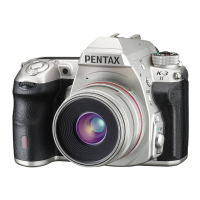3
Shooting
60
4 Set the parameters.
Available operations
5 Press E.
The screen of Step 2 reappears.
6 Press E.
7 Press F.
The camera returns to standby mode.
u Caution
• This function cannot be used in combination with some other
functions. (p.88)
• The Digital Preview operation in Step 2 cannot be performed
when the drive mode is set to [Multi-exposure], [Interval
Shooting], or [Interval Composite].
• Depending on the filter used, it may take longer to save
images.
t Memo
• Still images can also be processed with digital filters
in playback mode. (p.74)
Expands the dynamic range and enables a wider range of tones
to be recorded by the CMOS sensor and reduces the
occurrence of overexposed/underexposed areas.
Set the correction functions from [D-Range Settings]
of the A2 menu or the control panel.
u Caution
• When the sensitivity is set to less than ISO 200, [Highlight
Correction] cannot be set to [ON].
t Memo
• [Highlight Correction] in C mode can be set to [AUTO]
or [OFF].
Takes three consecutive images at three different exposure
levels to create a single composite image with them.
1 Select [HDR Capture] in A1 menu and press D.
The [HDR Capture] screen appears.
2 Select the capture type
and press E.
3 Set the range in which to change the exposure
in [Exposure Bracket Value].
Select from [±1EV], [±2EV], or [±3EV].
AB
Selects a parameter.
CD
Adjusts the value.

